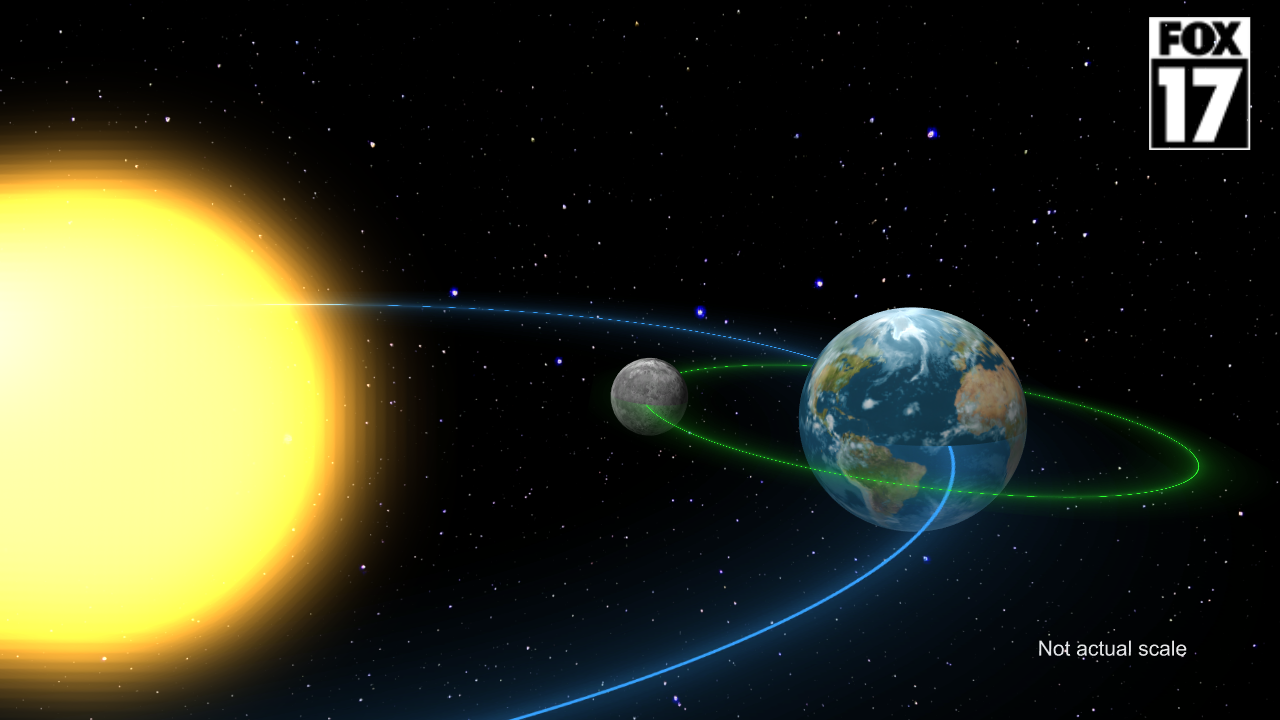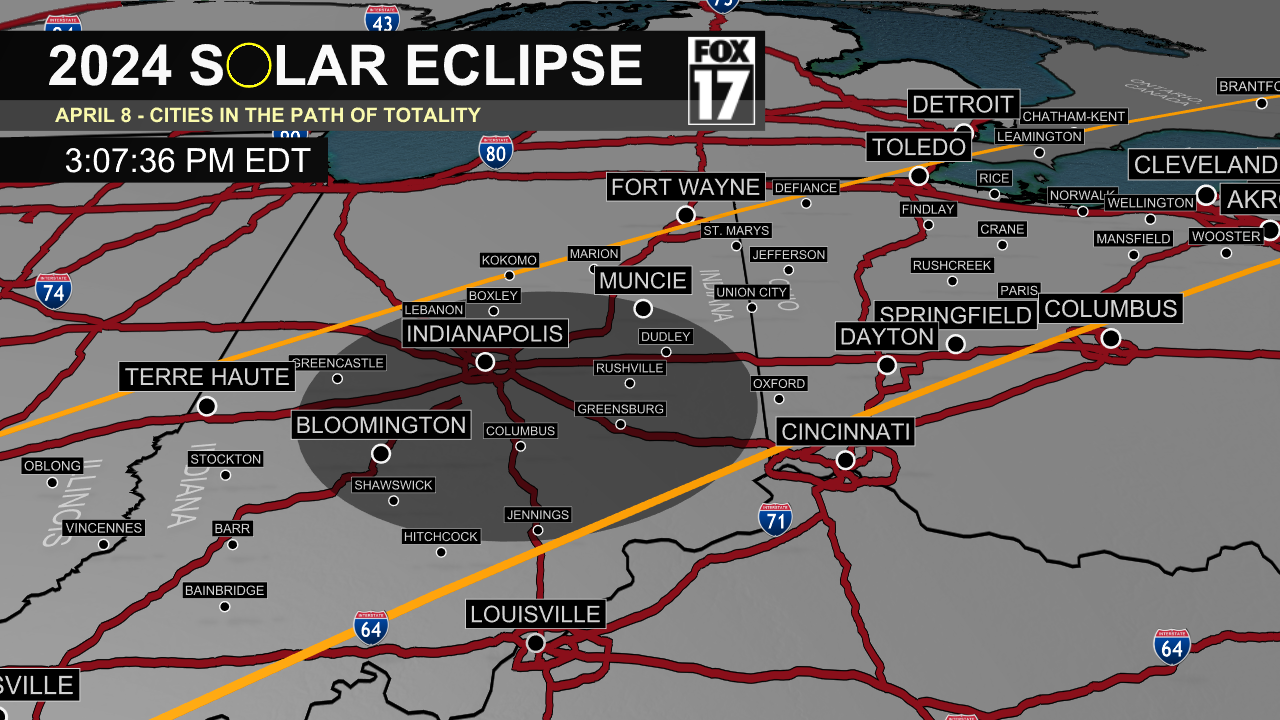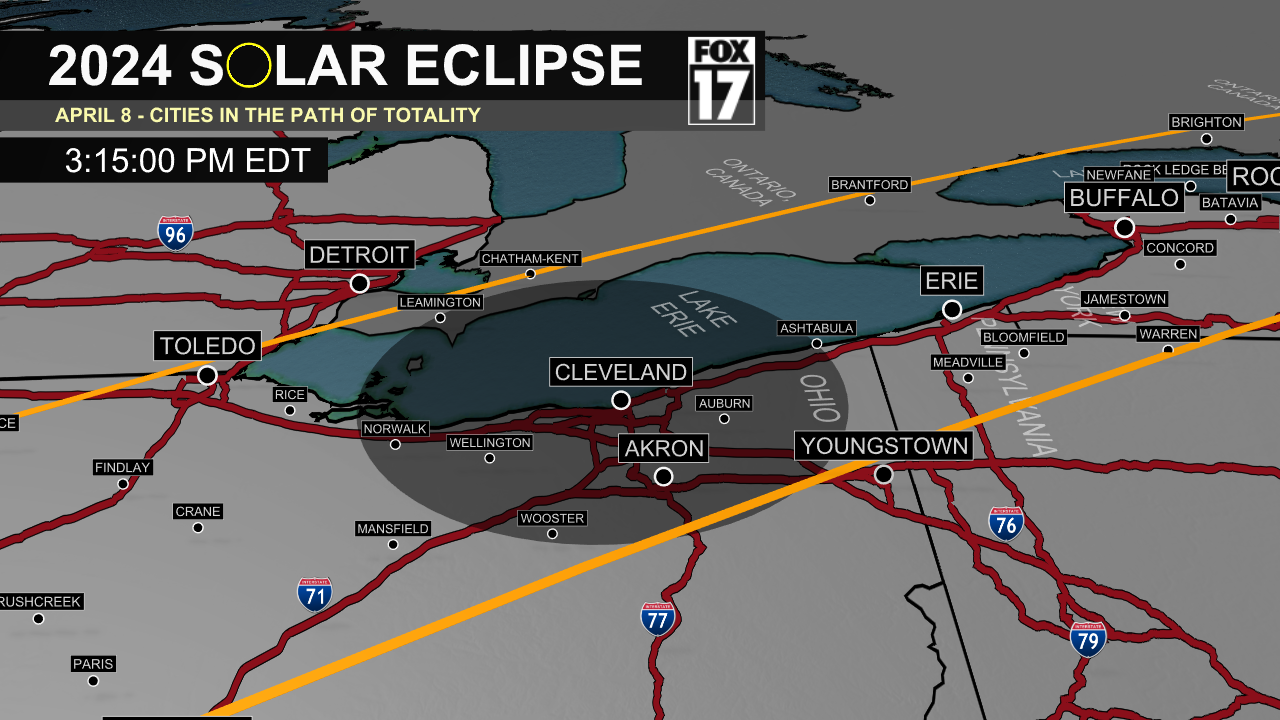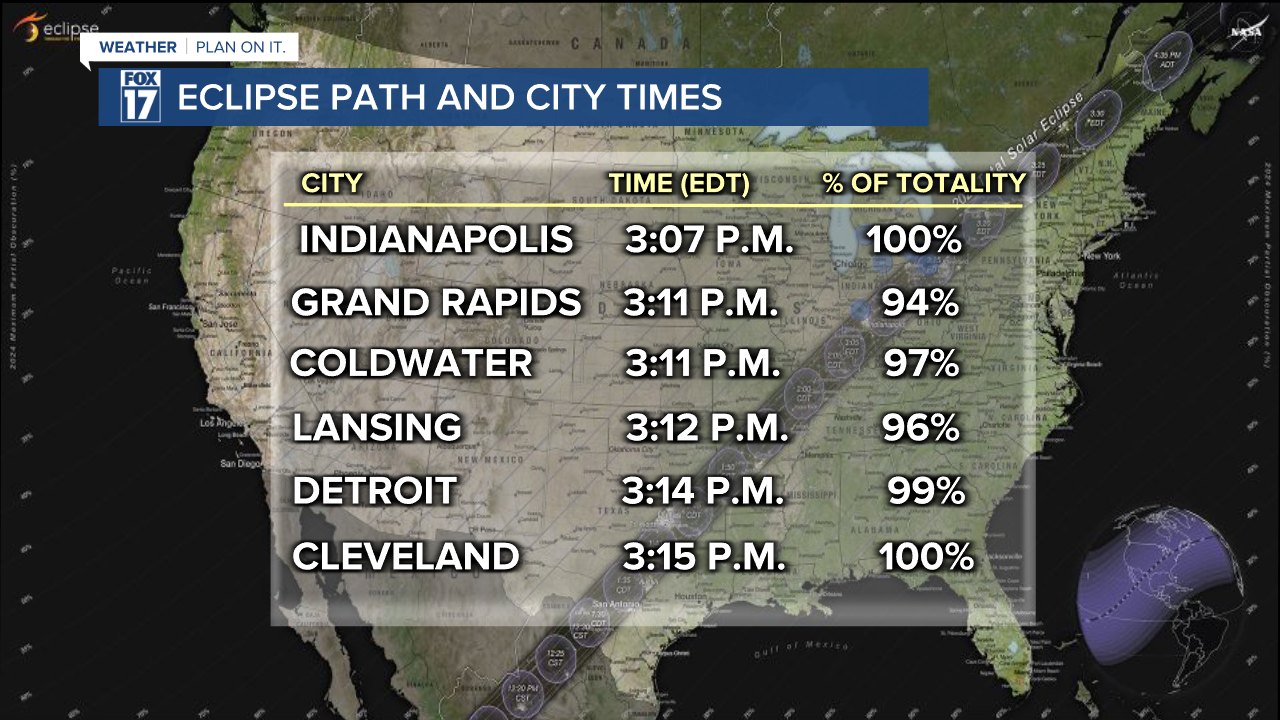WEST MICHIGAN — A celestial alignment countdown is on! A total solar eclipse is set to occur on April 8 for parts of Mexico, the United States, and Canada. While West Michigan has a great seat to view a partial solar eclipse, we will come short of totality. In order to view the total solar eclipse, you'll need to travel south.
What is a total solar eclipse?
A total solar eclipse occurs when the Moon passes directly between the Sun and the Earth, and they line up perfectly. The Moon then casts a shadow on Earth, fully blocking the Sun's light. When factoring in the orbits of the Earth and Moon, in addition to the rotation of the Earth, the timing for this to occur so close to West Michigan is rare.

During a total solar eclipse, the sky will darken as if it were dawn or dusk. According to NASA, "people in the path of a total solar eclipse can see the Sun’s corona, the outer atmosphere, which is otherwise usually obscured by the bright face of the Sun."
What is a partial solar eclipse?
A partial solar eclipse occurs when the Moon passes between the Sun and the Earth, however they are not perfectly lined up. During this event, only part of the Sun's rays will be covered. The Sun then appears as a crescent shape.
Most of the United States, including West Michigan, will see a partial solar eclipse on April 8.
Where can I see the total solar eclipse?
If you are hoping to view the total solar eclipse, you will need to travel out of Michigan! The image below shows the path of the total eclipse. The total eclipse path enters the United States in Texas, traveling northeast and departing the United States through Maine.

If you are hoping to travel to the path of totality, you will not need to drive far! Below is breakdown of the locations that will see the total solar eclipse, along with the timeline.
Indianapolis, Muncie, and Bloomington will see the total solar eclipse at 3:07 p.m. EDT on Monday, April 8.

By 3:10 p.m. EDT, the path of totality will extend into Ohio, including Dayton and Springfield.

One of the closest cities to West Michigan that will view the total solar eclipse is Toledo. The eclipse will begin at 1:56 p.m. EDT, eventually reaching totality at 3:13 p.m. EDT. During totality, the sky will darken as if it were dawn or dusk. Totality is expected to last for a matter of minutes.

Eventually the path of totality will extend through Cleveland at 3:15 p.m. EDT.

To find the specific time of the solar eclipse in your town or city, click here. Type in your location in the search bar!
When can I see the solar eclipse?
Below is a breakdown of when various cities and towns across the Great Lakes region will see their maximum totality. The percentage associated with each time represents how much of the Sun will be covered by the Moon during that time period.


For example, Kalamazoo will see 95 percent of the Sun's light blocked by the Moon. Since it is not 100 percent, this is considered a partial solar eclipse.
How long will the solar eclipse last?
The solar eclipse will begin and end at various times depending on your location. In it's entirety, the solar eclipse will be a little over two hours. That's including the beginning of the eclipse until the end. In Grand Rapids, the entire partial solar eclipse will be two hours and 29 minutes.

However, the maximum eclipse will only last for a matter of minutes. In Grand Rapids, the maximum amount of coverage will be 94 percent.
When is the next total solar eclipse in the United States?
The next total solar eclipse to occur over the continental United States will be in 20 years! According to Time and Date, the next total solar eclipse will occur over part of the United States is August 2044. It will occur in the northwest region.
The next total solar eclipse to travel across the continental United States, extending from California to Florida, will be August 12, 2045.
What makes this total solar eclipse different than the last?
The last total solar eclipse in the United States occurred on August 21, 2017. The total solar eclipse on April 8, 2024 will vary in numerous ways.
According to NASA, the 2024 total solar eclipse will be wider. In 2017, the path ranged from 62 to 71 miles wide. In the upcoming total solar eclipse, the path will range between 108 and 122 miles wide. That means more Americans will be able to experience and see it.

The total solar eclipse on April 8 will also have a longer duration in totality. The 2017 total solar eclipse had the longest period at two minutes and 42 seconds. The upcoming eclipse will have a totality duration up to four minutes and 28 seconds.
There will also be a heightened solar activity. According to NASA, the Sun has a natural cycle of increasing and decreasing solar activity due to it's magnetic field. In 2017, the Sun was nearing a solar minimum. During the upcoming eclipse, the Sun will be near a solar maximum.
During the 2024 eclipse, the Sun will be in or near solar maximum, when the magnetic field is more like a tangled hairball. Streamers will likely be visible throughout the corona. In addition to that, viewers will have a better chance to see prominences — which appear as bright, pink curls or loops coming off the Sun. With lucky timing, there could even be a chance to see a coronal mass ejection – a large eruption of solar material – during the eclipse.
Lastly, the upcoming total solar eclipse will offer NASA a chance at expanded scientific research. NASA will be funding several research initiatives on April 8 to better understand the Sun.
What can I do to safely view the solar eclipse?
During a partial or total solar eclipse, you must always have protection for your eyes. NASA provides safety tips on their website.

You must use specific eclipse viewing glasses. Normal sunglasses or welding glasses will not protect your eyes. NASA also stated, "do not look at the Sun through a camera lens, telescope, binoculars, or any other optical device while wearing eclipse glasses or using a handheld solar viewer — the concentrated solar rays will burn through the filter and cause serious eye injury."
The safest choice is to view the solar eclipse indirectly. Click here for various tips and more information on how to view the solar eclipse safely.

For additional information from NASA regarding the total solar eclipse, click here.
The forecast will have a large part in viewing the solar eclipse on April 8. For the latest details on the weather in West Michigan, head to the FOX 17 Weather page.
Track the path of the eclipse with this interactive map.
Follow FOX 17: Facebook - X (formerly Twitter) - Instagram - YouTube



